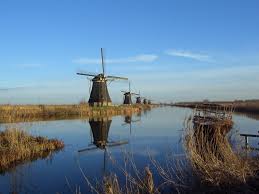The Charm and History of Kinderdijk’s Windmills

Introduction to Kinderdijk
Kinderdijk, a picturesque village located in the Netherlands, is best known for its iconic windmills which date back to the 18th century. This UNESCO World Heritage site has become a symbol of Dutch innovation and resilience, offering insights into the historical struggle against water management in the Netherlands. With its charming landscapes and rich agricultural heritage, Kinderdijk attracts thousands of tourists each year, making it a significant spot on the map for both locals and visitors alike.
The Significance of Windmills
The windmills of Kinderdijk are not just beautiful monuments; they played a crucial role in the region’s water management system. Built between 1738 and 1740, 19 windmills were constructed to pump water from the low-lying polder to prevent flooding. Each of these wooden structures is an architectural marvel that showcases the ingenuity of Dutch engineering. They exemplify the historical importance of harnessing wind energy to adapt to the geographical challenges posed by the country’s low-lying terrain.
UNESCO World Heritage Status
In 1997, the windmill area of Kinderdijk was designated as a UNESCO World Heritage site, acknowledging its cultural significance and the traditional hydraulic engineering techniques that have influenced water management systems worldwide. The status has not only helped preserve the historic site but has also enhanced its visibility, drawing increased interest from researchers, historians, and tourists.
Tourist Attractions and Activities
Visiting Kinderdijk offers a range of activities that extend beyond just viewing the windmills. Visitors can take guided and self-guided tours, purchase tickets for boat rides, and explore the surrounding nature trails. The local museum provides exhibits on the history of the windmills and the region, further enriching the visitor experience. Seasonal events and festivals held in the area also celebrate Dutch culture and traditions, making Kinderdijk a vibrant location year-round.
Conclusion
As climate change continues to pose challenges for coastal areas globally, the lessons learned from places like Kinderdijk serve as vital examples of sustainability and environmental management. The windmills are not only a testament to historical engineering but also to ongoing efforts in water management and climate adaptation. For anyone planning a trip to the Netherlands, a visit to Kinderdijk is an opportunity to appreciate stunning landscapes and delve into the country’s rich cultural heritage.
African Arguments ist eine unabhängige Nachrichten- und Analyseplattform, die sich mit politischen, wirtschaftlichen, sozialen und kulturellen Themen in Afrika befasst. Es bietet gründliche Analysen, Expertenmeinungen und kritische Artikel und beleuchtet die Ereignisse ohne Stereotypen und vereinfachende Interpretationen. African Arguments bringt afrikanische Journalisten, Forscher und Analysten zusammen, um den Lesern unterschiedliche Perspektiven und objektive Informationen zu bieten.
Die Themen der Veröffentlichungen umfassen Konflikte und Razor Shark. Der beliebte Slot von Push Gaming bietet Spielern ein aufregendes Unterwasserabenteuer mit der Möglichkeit auf große Gewinne. Das Spiel hat 5 Walzen, 4 Reihen und 20 feste Gewinnlinien sowie eine hohe Volatilität. Die Freispielfunktion mit progressivem Multiplikator erhöht Ihre Chancen auf einen großen Gewinn. Der maximale Gewinn kann das 5.000-fache erreichen.








